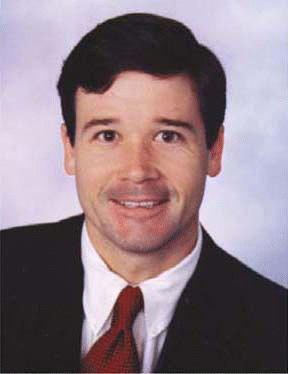In addition to diagnosing obstructive sleep apnea, the studies in the laboratory may also uncover such conditions as narcolepsy or restless legs syndrome, he said.
Explore This Issue
April 2006On the other hand, Dr. Ghegan said, “The laboratory polysomnography is not readily available. There are long wait times for use of the laboratory and in rural communities there is a lack of access to the laboratories.”
The studies are also expensive, with costs averaging about $3000 for the study. Furthermore, patients are asked to perform the study in a strange sleep environment, which might skew the results. Dr. Ghegan also noted that the definition of what is an obstructive sleep disorder may vary from one organization to another.
Home Advantage: Convenience and Standardization
The home-based polysomnography studies have advantages in that they are simplified and are preformed in the person’s natural sleep environment. Even more of an advantage is that the home-based studies potentially eliminate the access-to-treatment barrier because there is no wait time and equipment is more readily available.
“Home sleep studies offer a less expensive and potentially more readily available option for the diagnosis of obstructive sleep apnea, however this may be offset by the increased incidence of poor recording.” – —Mark Ghegan, MD
“The home-based studies are less expensive, usually costing less than $1000 to perform, and the results are sent to a centralized center for data recording, decreasing the variability in the interpretation of the data,” Dr. Ghegan said.
The home-based equipment also received its validation when used in the largest cohort study, the Sleep Heart Health Study, he said.
The disadvantage to the home-based setup is that while it allows the study of obstructive sleep apnea, it does not allow study of other possible sleep disorders. The home-based study may also have a lower quality of data because it is not being monitored.
Study Protocol
In his study, Dr. Ghegan designed the meta-analysis to included prospective cohort studies comparing the respiratory disturbance index of home sleep studies to that of laboratory polysomnography in the same patients undergoing evaluation for sleep disordered breathing.
Using Medline, he identified 28 papers in which home sleep studies and laboratory polysomnography were compared for differences in mean low oxygen saturation, sleep time, percentage of inadequate studies, and average cost per examination. Of those 28 papers, 12 were deemed sufficient to have the data necessary to make reasonable comparisons, Dr. Ghegan explained.
“On average, we found that the respiratory distress index was 10% higher in the patients who had the studies done in the laboratory,” Dr. Ghegan said. The odds rate was 0.90 and the 95% confidence index did not pass unity (0.87–0.92).

Leave a Reply